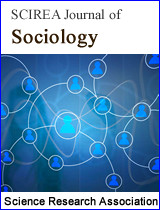Celestial Spheres in fifteenth-Century Cracow Astronomy and Natural Philosophy
DOI: 10.54647/sociology84512 68 Downloads 14588 Views
Author(s)
Abstract
This essay documents the pragmatic empiricism of fifteenth-century Cracow astronomy and natural philosophy on the questions of the reality of celestial spheres and models. In this pragmatic tradition at Cracow Copernicus acquainted himself with the problems that led eventually (which is to say about fifteen years after he left Cracow) to his new cosmological vision. Once he formulated the fundamental assumptions clearly, his goal was to construct the models that fit the best. By his own admission he did not always succeed in discovering a unique solution, developing his own non-Aristotelian version of homocentrism, rejecting that solution in the face of observational refutation, proposing several alternative models, ultimately leaving open the possibility for the emergence of one as the correct solution or the possibility for an entirely new solution. This is not to say that Copernicus was not committed to realism or truth, but rather to say that his achievement was partial, and so to that extent in conformity with the pragmatic empiricism of fifteenth-century Cracow astronomy and natural philosophy. While relying on his teachers and predecessors, he constructed a compromise between a realist cosmology and a pragmatic mathematical construction of models.
Keywords
Celestial spheres, Albert of Brudzewo, Copernicus
Cite this paper
ANDRÉ GODDU,
Celestial Spheres in fifteenth-Century Cracow Astronomy and Natural Philosophy
, SCIREA Journal of Sociology.
Volume 5, Issue 4, August 2021 | PP. 176-222.
10.54647/sociology84512

